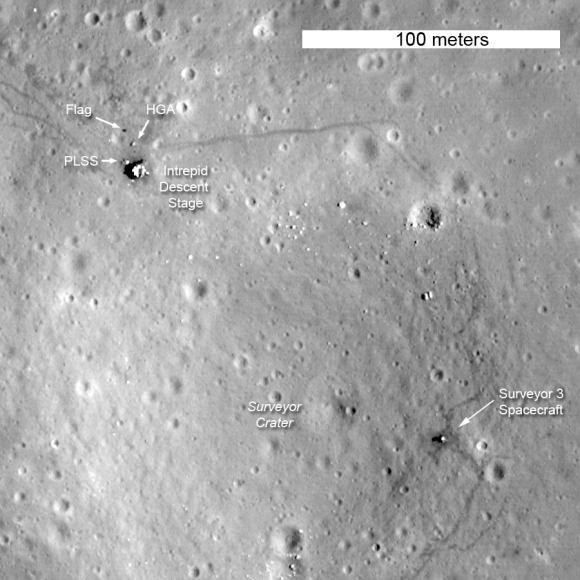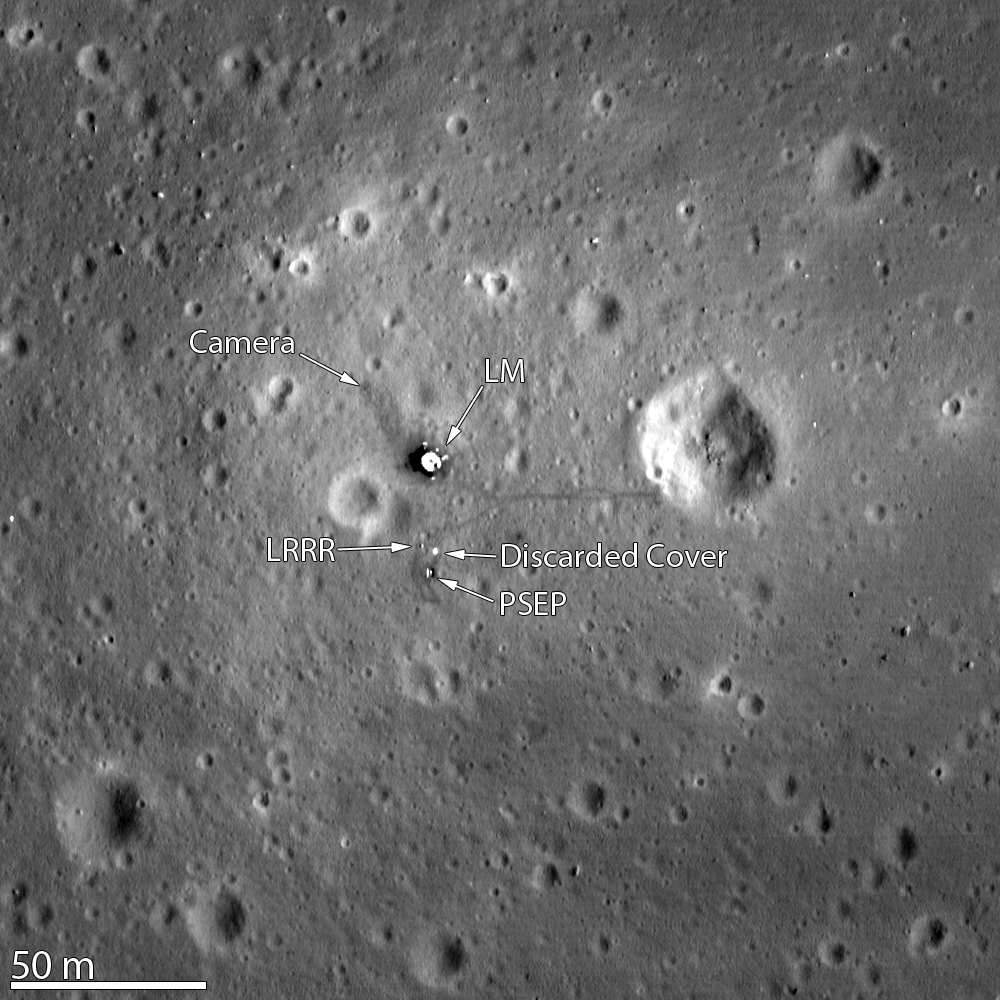[/caption]
Just over 42 years after Neil and Buzz became the first humans to experience the “stark beauty” of the lunar surface, the Lunar Reconnaissance Orbiter captured the remnants of their visit in the image above, acquired Nov. 5, 2011 from an altitude of only 15 miles (24 km). This is the highest-resolution view yet of the Apollo 11 landing site!
The Lunar Module’s descent stage, a seismic experiment monitor, a laser ranging reflector (LRRR, still used today to measure distances between Earth and the Moon) and its cover, and a camera can be discerned in the overhead image… as well as the darker trails of the astronauts’ bootprints, including Armstrong’s jaunt eastward to the rim of Little West crater.
The crater was the furthest the Apollo astronauts ventured; in fact, if you take the total area Neil and Buzz explored it would easily fit within the infield of a baseball diamond!
Neil Armstrong’s visit to the crater’s edge was an unplanned excursion. He used the vantage point to capture a panoramic image of the historic site:

“Isn’t that something! Magnificent sight out here.” Armstrong had stated before he was joined by Aldrin on the lunar surface. “It has a stark beauty all its own. It’s like much of the high desert of the United States. It’s different, but it’s very pretty out here.”
Previously the LROC captured the Apollo 15 landing site, which included the tracks of the lunar rover — as well as the rover itself! And, just yesterday, the LROC site operated by Arizona State University featured the latest similarly high-resolution view of the Apollo 12 site. This location has the honor of being two landing sites in one: Apollo 12 and the Surveyor 3 spacecraft, which had landed on April 20, 1967 – two and a half years earlier!

Even though the US flag planted by Apollo 12 astronauts Pete Conrad and Alan Bean isn’t itself visible, the shadow cast by it is.
Apollo 12 was the only mission to successfully visit the site of a previous spacecraft’s landing, and it also saw the placement of the first Apollo Lunar Surface Experiments Package (ALSEP), which included a seismometer and various instruments to measure the lunar environment.
Read more about this image on the LROC page here, and check out the video tour below of the Apollo 12 site.
Images and video courtesy of NASA/GSFC/Arizona State University

